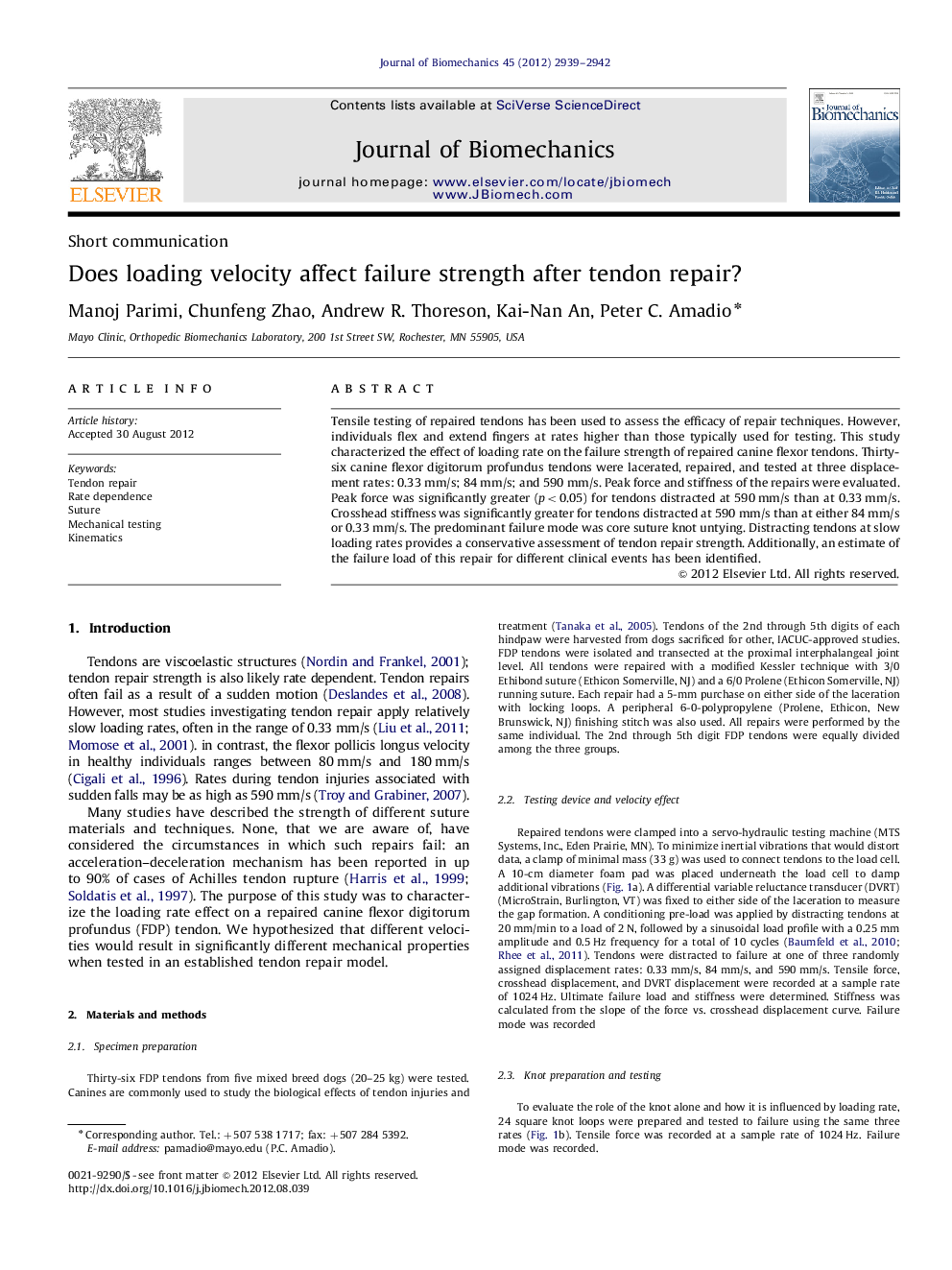| Article ID | Journal | Published Year | Pages | File Type |
|---|---|---|---|---|
| 10432183 | Journal of Biomechanics | 2012 | 4 Pages |
Abstract
Tensile testing of repaired tendons has been used to assess the efficacy of repair techniques. However, individuals flex and extend fingers at rates higher than those typically used for testing. This study characterized the effect of loading rate on the failure strength of repaired canine flexor tendons. Thirty-six canine flexor digitorum profundus tendons were lacerated, repaired, and tested at three displacement rates: 0.33Â mm/s; 84Â mm/s; and 590Â mm/s. Peak force and stiffness of the repairs were evaluated. Peak force was significantly greater (p<0.05) for tendons distracted at 590Â mm/s than at 0.33Â mm/s. Crosshead stiffness was significantly greater for tendons distracted at 590Â mm/s than at either 84Â mm/s or 0.33Â mm/s. The predominant failure mode was core suture knot untying. Distracting tendons at slow loading rates provides a conservative assessment of tendon repair strength. Additionally, an estimate of the failure load of this repair for different clinical events has been identified.
Related Topics
Physical Sciences and Engineering
Engineering
Biomedical Engineering
Authors
Manoj Parimi, Chunfeng Zhao, Andrew R. Thoreson, Kai-Nan An, Peter C. Amadio,
